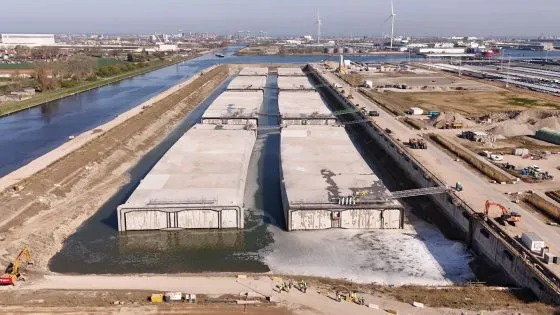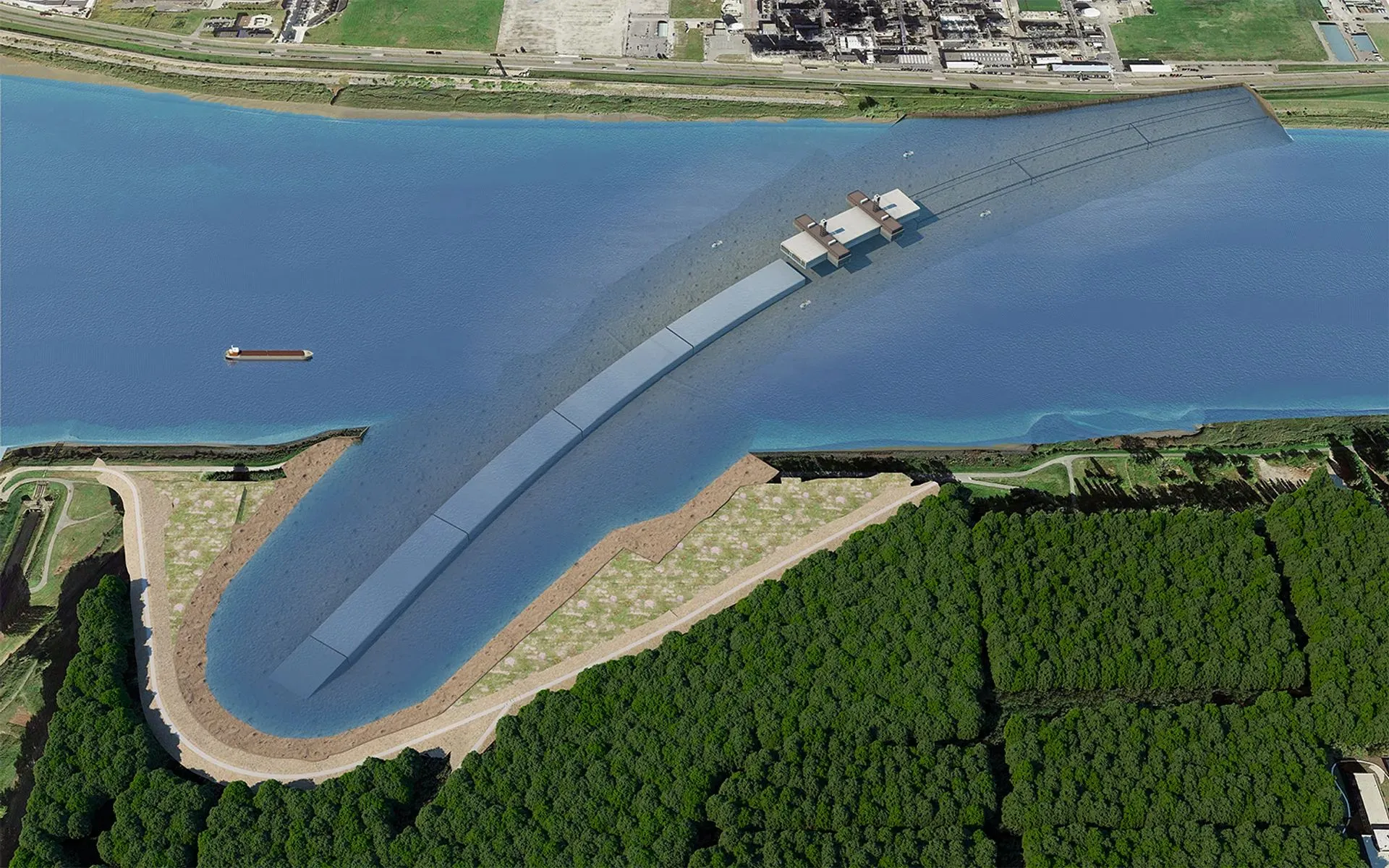Concrete elements that will form a 1.8km long immersed tunnel in the River Scheldt, Belgium, were recently floated in a dock ahead of their journey to Antwerp.
The Scheldt tunnel is part of the Oosterweel connection project that aims to complete the Antwerp Ring Road to the north side of the River Scheldt. It is being developed by Lantis for the Flemish government.
The 1.8km tunnel will cross the River Scheldt and will have three lanes in both directions, with an escape tube and a separate 6m wide bicycle tube in between.
The THV COTU joint venture, comprising Belgian construction groups Deme, Besix, Bam Contractors and Jan De Nul, is building the tunnel under a contract valued at €570M (£488M). Infranea, member of VK Architects Engineers, supported THV COTU with complete parametric modelling of the doubly curved tunnel.
The tunnel will be made up of eight concrete elements that are 10m high, 42m wide, 160m long and weigh 60,000t. As the tunnel will not follow a perpendicular route under the Scheldt, each element is unique and slightly curved.
The elements have been constructed at a dock in Zeebrugge. After two years of contraction, COTU has now started to flood the dock with around 800,000m³ of water.
Once the elements are fully submerged in water, they will be towed more than 100km to Antwerp via the North Sea and the Western Scheldt, where they will be sunk in a pre-dredged trench in the River Scheldt in Antwerp. The first element is scheduled to begin its 30-hour journey in May.
In Antwerp, COTU is preparing the left bank and right bank with locally built tunnel sections, between which the tunnel elements fit. To build these sections, the team had to temporarily close the Scheldt dyke on both banks. It then dewatered the soil, dug to a depth of 25m below ground level and then started construction.
On the left bank the tunnel will start further inland because there are mud flats and salt marshes between the dyke and the Scheldt. This will give the river more space and the areas behind it protection from flooding.
In a press release, Bam said that the team is “well aware of the challenges that such a project brings”, especially as they tunnel is being constructed in “a technically difficult environment such as the Scheldt”.
“But the partners are confident that they have the necessary expertise and decades of experience to successfully achieve the realisation of this vital stage of the Oosterweel link project.”
The tunnel is expected to be open to traffic by 2030, with the cycle tube accessible as early as early 2028.
The Oosterweel project comprises the tunnel in the Scheldt, the infrastructure on the Antwerp right bank, and the electromechanical installations of the various tunnels.
The contract for the construction of road infrastructure on the right bank was awarded to the Tijdelijke Maatschap Rechteroever Compleet (TM ROCO) team in 2021.
The right bank sub-project, via the Oosterweel intersection, forms the link between the Scheldt tunnel and the R1, both in the northern and eastern directions. The R1 will also be constructed completely in a cutting and partly covered.

